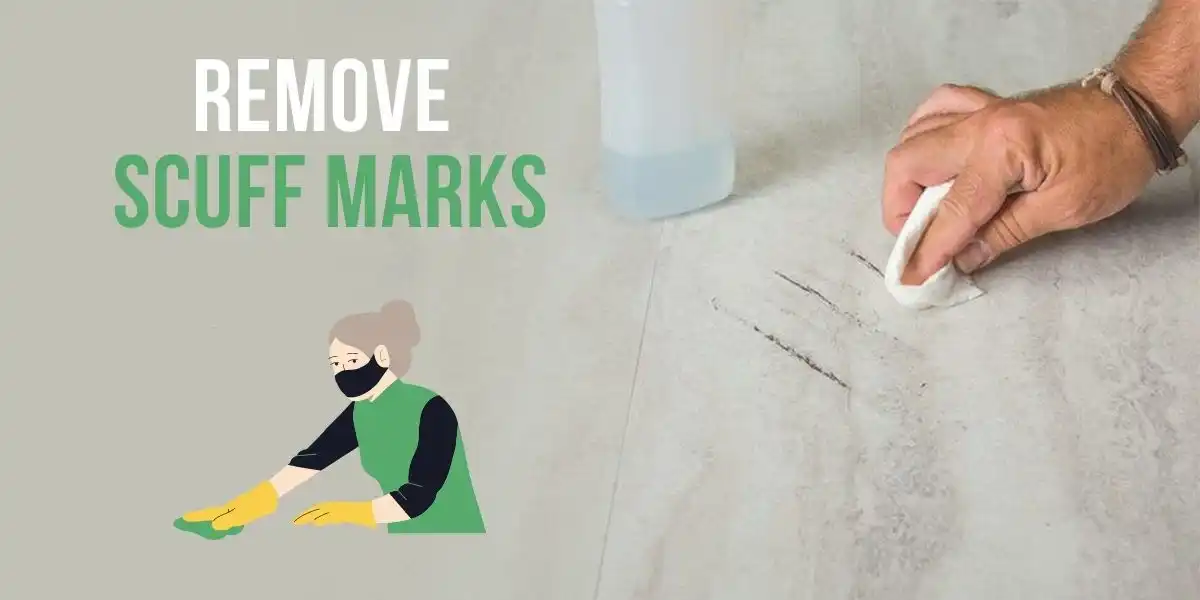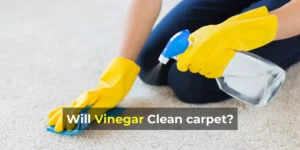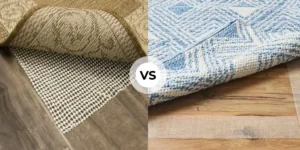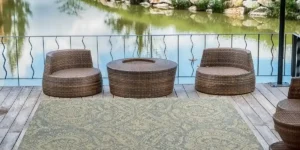Many homeowners prefer laminate flooring. Because it is durable enough to withstand heavy use while still looking fresh out of the box.
Yet, it is still vulnerable to developing scuff marks over time. Whether it’s from shoes, furniture, or just everyday life. Scuff marks can turn your beautiful floor into a bit of an eyesore.
But fear not! I have shared simple tips on how to bid those marks and restore the glory of your laminate flooring.
Before we dive into the how-tos, let’s talk about why these scuff marks are troublemakers.
Laminate flooring might be tough, but it’s not invincible. Those scuff marks can act like tiny scratches, making your floor look worn out and dull. Nobody wants that, right?
That’s why we made this comprehensive guide: How to remove scuff marks from laminate flooring?
Does it Matter If There Are Scuff Marks?
Yes, scuff marks matter. They can impact your home’s appearance. If you are not addressed immediately, scuffs could even cause permanent discoloration.
Additionally, if you rent your home and the floor has scuff marks. So, your landlord may dock you some security deposit.
What are the Causes of Scuff Marks?
- Shoes: The most common cause of scuff marks is dark-soled shoes. Wearing shoes in the house is likely the root of the problem.
- Furniture Moves: Furniture movement can sometimes leave scuff marks. Especially on furniture with dark rubber furniture pads on the legs.
- Kids and Pets: Little ones and furry friends are cute but can be sneaky scuffers. Kid’s or pet’s toys might leave marks as they dash around.
- Improper Cleaning Tools: Using the wrong cleaning tools can be like inviting scuff marks to the party. Rough brushes or harsh chemicals might accidentally scratch the surface.
Also See: 4 Best Furniture Pads for Laminate Floors (Buying Guide Included)
How to Remove Scuff Marks from Laminate Flooring?
It’s a good idea to clean them up right away, as soon as you notice new scuff marks. The longer you wait, the tougher it becomes to get rid of those marks from your laminate flooring.
Cleaning them up quickly makes it easier to keep your floor looking good.
With that in mind, here are some effective ways you can use to remove scuff marks from laminate flooring;
Use Nail Polish Remover
Use Acetone-based nail polish to remove soft and tough scuff marks from flooring. To remove scuff marks with nail polish remover, follow the steps below;
- Take a clean microfiber cloth and dampen it with the nail polish remover.
- Using a microfiber cloth, gently scrub the scuff marks until they are completely gone.
- Then wipe the spots with a clean microfiber soaked in water to remove the lingering residues.
- Dry the area with a dry towel or clean microfiber.
Before using nail polish remover on your flooring, check the manufacturer’s warranty. This is important because it might harm the protective layer. It’s a good idea to try it out on a small, separate section of the laminate surface first to see if it works without causing any issues.
Or, you can also use baking powder. If you do not have acetone-based polish remover follow the same procedure. But make sure to use the right amount of baking powder.
Use two tablespoons. Then, mix with a small amount of water solution, and it will not harm the laminate.
Must See: Will Acetone Damage Laminate Floor? (Explained)
Treat the Scuff Marks with Rubber
As iron sharpens iron, so the rubber does to rubber.
Because scuff marks result from rubber residue left behind on the laminate. You can effectively remove the scuffs by treating them with rubber products.
For instance, you can use a pencil eraser or tennis ball to work on the scuff marks.
If you intend to use the tennis ball method, cut an “X” in the tennis ball. Stick it on the end of the broom. Buff out the scuff mark while applying gentle pressure. With a school/pencil eraser, you can work on the scuff marks with your hands until they disappear.
But, before using the rubber or tennis ball to treat the scuff marks. Make sure you wipe the scuff marks with a clean damp microfiber cloth.
Note: If your laminate flooring is lighter in shade, it would be helpful to test the rubber on a discreet area first. This will ensure it doesn’t discolor the laminate.
Apply WD-40
You can also use WD-40 to remove scuff marks from the laminate flooring. WD-40 is versatile for degreasing applications. Dab the WD-40 on the scuff marks using gentle pressure until they disappear.
Then take a clean microfiber cloth, and damp it in vinegar to clean any paste residue left behind. And wipe clean the surface with a damp cotton cloth.
Use Commercial Cleaners
Commercial cleaners are also effective in eliminating scuffs, especially the prominent white marks. Use distilled water and non-abrasive commercial cleaners to clean laminate flooring. Goo Gone, Simple Green, and more are specifically designed for this.
Before applying any cleaner, make sure you test it on a discreet surface. Confirm if it does not harm the laminate.
Lastly, remove the scuff marks. Wipe the surface clean with a damp cloth. Immediately dry it using a dry cotton cloth.
Must See: Can You Use Goo Gone on Laminate Flooring? (Explained)
Read More on Laminate Floors
- Will Acetone Damage the Laminate Floor? (Explained)
- Can You Use Goo Gone on Laminate Flooring? (Explained)
- A Guide to Remove Sticky Residue from Laminate Flooring
- How to Dry Water Under Laminate Flooring? (A Step-By-Step Approach)
- How to Remove Candle Wax from Laminate Flooring? (6 Easy Steps)





